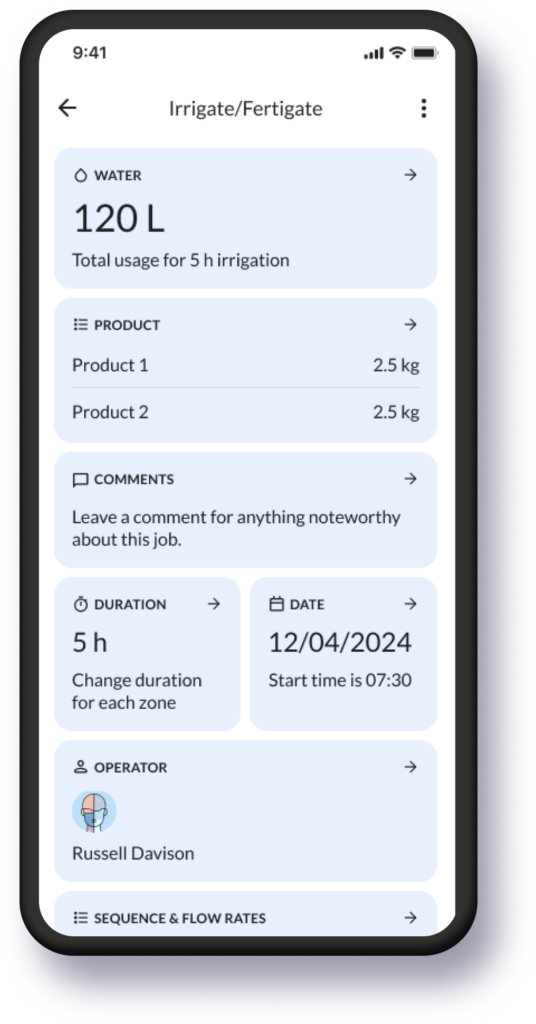Holistic Irrigation Management: Using Technology to Optimize Water Use
In an era of unpredictable weather patterns and increasing water scarcity, farmers must adopt a holistic approach to irrigation management. While technology such as soil probes, weather sensors, and smart irrigation platforms provide invaluable data, a balanced strategy that integrates these tools with traditional farming knowledge is essential for long-term sustainability.
Why Holistic Irrigation Management Matters
Over-reliance on a single irrigation tool can lead to inefficiencies and increased operational costs. By combining multiple technologies and insights, farmers can:
- Improve Water Efficiency: Reduce overwatering and ensure plants receive the exact amount of water they need.
- Enhance Crop Health: Optimize root development and minimize stress by providing consistent and adequate hydration.
- Lower Input Costs: Reduce energy use and fertilizer loss through precise irrigation scheduling.
- Build Climate Resilience: Adapt to changing weather conditions with real-time data and predictive analytics.
Key Tools for Managing Irrigation Effectively
To create a truly effective irrigation strategy, farmers can integrate a variety of tools:
1. Soil Moisture Probes
Soil probes provide real-time data on moisture levels at different soil depths, helping farmers determine when and how much to irrigate. Leading options include:
- Sentek Soil Moisture Probes – Advanced probes that measure soil moisture, salinity, and temperature.
- AquaSpy – Multi-sensor probes offering deep soil insights for data-driven irrigation decisions.
- IrriCheck – Smart soil moisture monitoring solutions tailored to regional farming conditions.
2. Weather Forecasting & Climate Sensors
Understanding weather patterns allows farmers to plan irrigation schedules more effectively. Some top tools include:
- Davis Instruments – Wireless weather stations providing real-time climate data.
- The Weather Company – AI-driven weather forecasts tailored for agricultural applications.
- Metos by Pessl Instruments – IoT-based environmental monitoring solutions for precision farming.
3. Smart Irrigation Controllers
Automated irrigation controllers help optimize water distribution based on soil and weather conditions. Examples include:
- HydroPoint – Weather-based irrigation controllers for improved efficiency.
- Rubicon Water – Precision irrigation networks for large-scale farms.
4. Farm Management Platforms
Comprehensive farm management platforms integrate multiple irrigation data sources for better decision-making.
Farmable: A Digital Solution for Smarter Irrigation
Farmable provides an intuitive way to manage irrigation while integrating multiple data points. Key features include:
- Irrigation Logging: Keep records of irrigation activities and track water usage trends.
- Fertigation Tracking: Monitor nutrient applications to ensure balanced soil fertility.
- Customizable Reports: Analyze irrigation efficiency over time to make data-driven improvements.
- Team Collaboration: Easily share data with farm workers and agronomists.
- Integration with Sensors & Forecasts: Combine soil moisture data, weather insights, and irrigation logs for a complete irrigation strategy.

The Balanced Approach to Irrigation Management
While technology significantly enhances irrigation efficiency, farmers should still rely on field observations, local weather knowledge, and crop response analysis. By blending traditional expertise with modern technology, growers can make more informed decisions, conserve water, and increase productivity.
Why Traditional Methods Still Matter
- The Hand Test: Digging into the soil and feeling its moisture remains a simple yet effective method of confirming sensor readings.
- Root Zone Checks: Inspecting root development can help ensure that water is reaching the appropriate soil depth.
- Crop Observation: Monitoring leaf color, wilting signs, and growth patterns provides visual indicators of irrigation effectiveness.
Water Usage Efficiency as a Key Performance Indicator
Water Usage Efficiency (WUE) plays a crucial role in both traditional and technology-driven irrigation strategies. Measuring WUE ensures that applied water is used effectively, reducing waste and optimizing crop yields. Farmers can calculate WUE using the following formula:
WUE (%) = (Water stored in the root zone ÷ Water applied) × 100
This calculation helps:
- Identify Areas of Improvement: Highlight inefficiencies in irrigation practices and refine water management strategies.
- Enhance Resource Allocation: Ensure water is evenly distributed across fields to avoid under- or over-watering.
- Support Sustainable Farming: Reduce overall water consumption while maintaining or improving yield levels.
- Adapt to Climate Conditions: Adjust irrigation plans based on evapotranspiration rates and real-time soil moisture data.
Conclusion
Adopting a holistic irrigation management approach—utilizing soil probes, weather sensors, smart controllers, and platforms like Farmable—ensures farmers maximize efficiency while maintaining sustainability. By integrating multiple tools and insights, growers can achieve long-term resilience in an evolving agricultural landscape. However, balancing technology with traditional practices such as hand-testing soil moisture, directly observing crop health, and calculating Water Usage Efficiency will further refine irrigation strategies and improve overall farm success.
Start optimizing your water use today—log and track your irrigation with Farmable!
How to get started using Farmable:
https://farmable.tech/blog/getting-started-farmable-farm-management-app/

